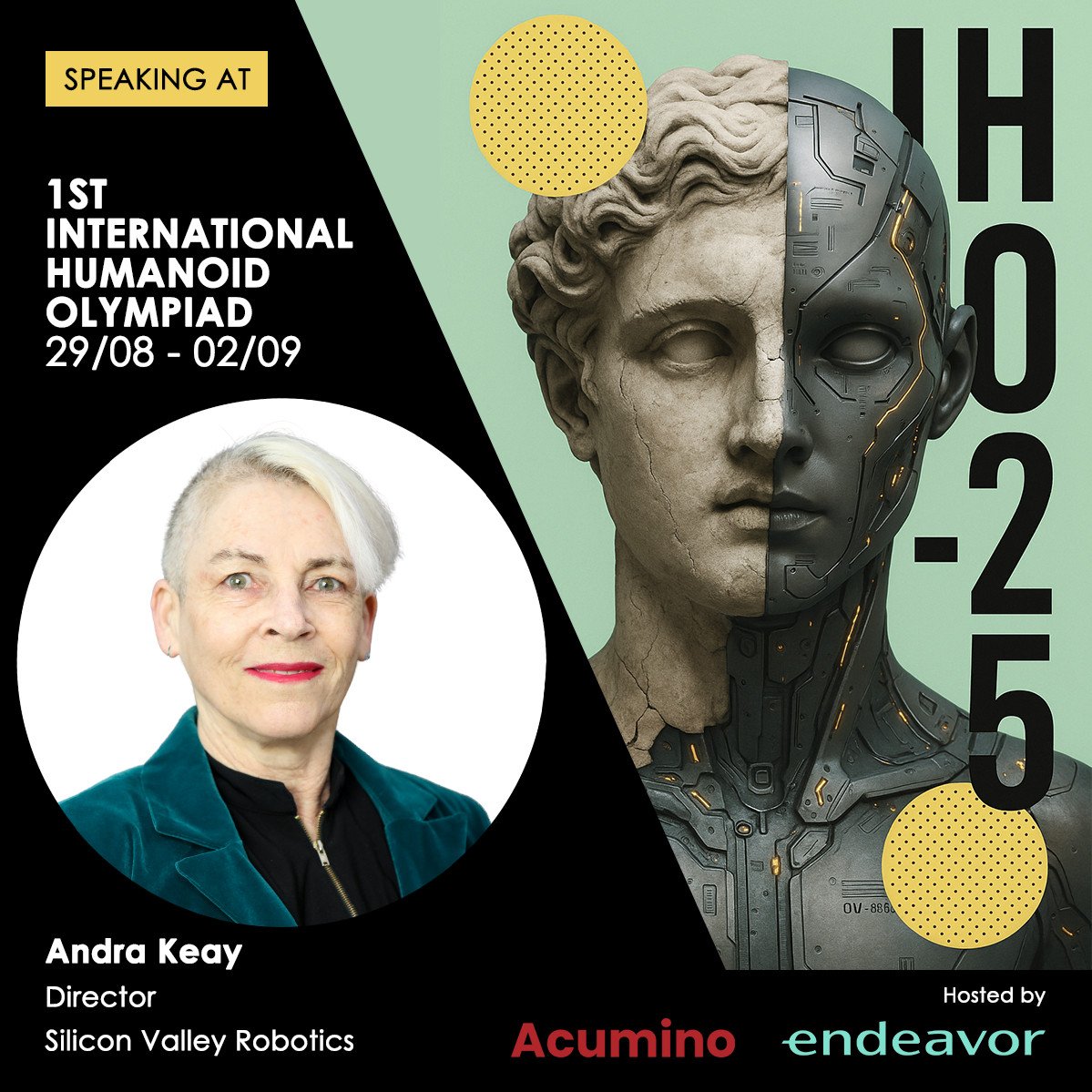Saturday, 30 August 2025
Andra Keay
Title: “Can Humans Outrun Robots?”
Abstract: We know that humanoid robots are really here. AI is powering the latest and greatest robot innovations, and the experts are making some dire predictions about what the future holds for humanity. Will robots take all our jobs? Will robots become superintelligent? This talk analyzes the predictions for our future and paints a realistic picture of the coming changes, diving into how robots can solve our global challenges, how humans can leverage new laws of robotics, and how we can run faster than robots.
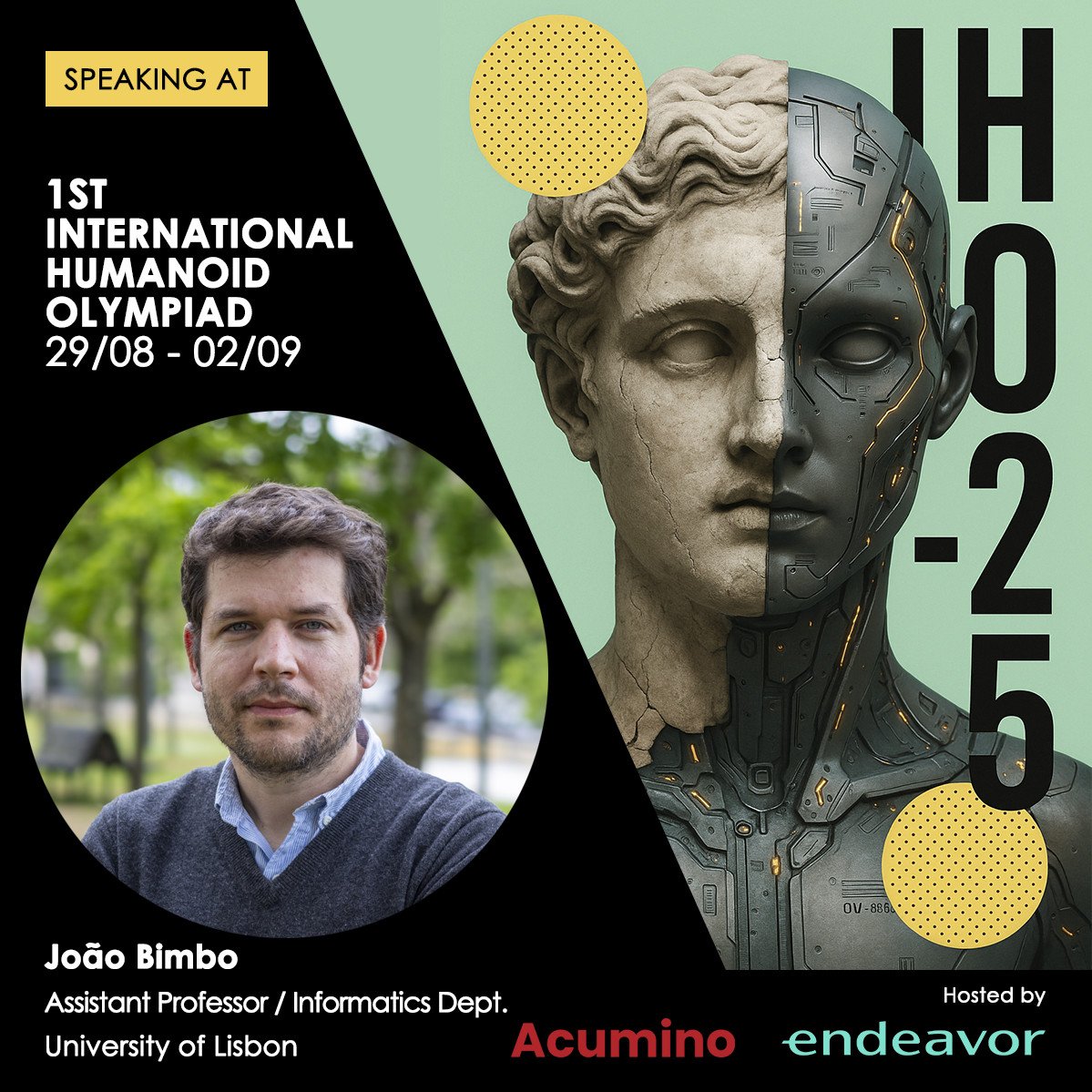 Joao Bimbo
Joao Bimbo
Title: “Haptics: Robotics is a Contact Sport”
Abstract: Intelligent action begins with physical interaction. This talk explores how robots can perceive the world through force and touch, a field known as “haptics”. It will show how modern robots use force and torque sensing to understand objects, adapt their movements, and interact safely with their environment.
 David Cleaves
David Cleaves
Title: “Humanoids for Humans: Designing Robots for the People They’ll Work With”
Abstract: We are entering the first phase of mass human–robot coexistence—not in science fiction, but in factories, warehouses, airports, and public spaces. The way these robots look, behave, and signal intent will shape the public’s comfort, trust, and expectations for decades to come. Just as early autonomous vehicles were deliberately cautious and legible, the first wave of humanoid robots must be designed for legibility, emotional clarity, and a sense of approachable purpose. But unlike self-driving cars, these machines aspire to seem human, so we must also design for positive emotional qualities like joy, humor, and charm. Using his background as head of design for BMW’s digital experiences—including autonomy and in-car intelligence—as well as lessons from argodesign’s recent design of Apptronik’s Apollo humanoid robot, this talk explores the design challenges and decisions involved in crafting the appearance, personality and behavior of humanoid robots built to work alongside people. It looks at how industrial design, interface design, motion design, and AI interaction design come together in the service of early coexistence—and how we’re setting the stage for future evolution.
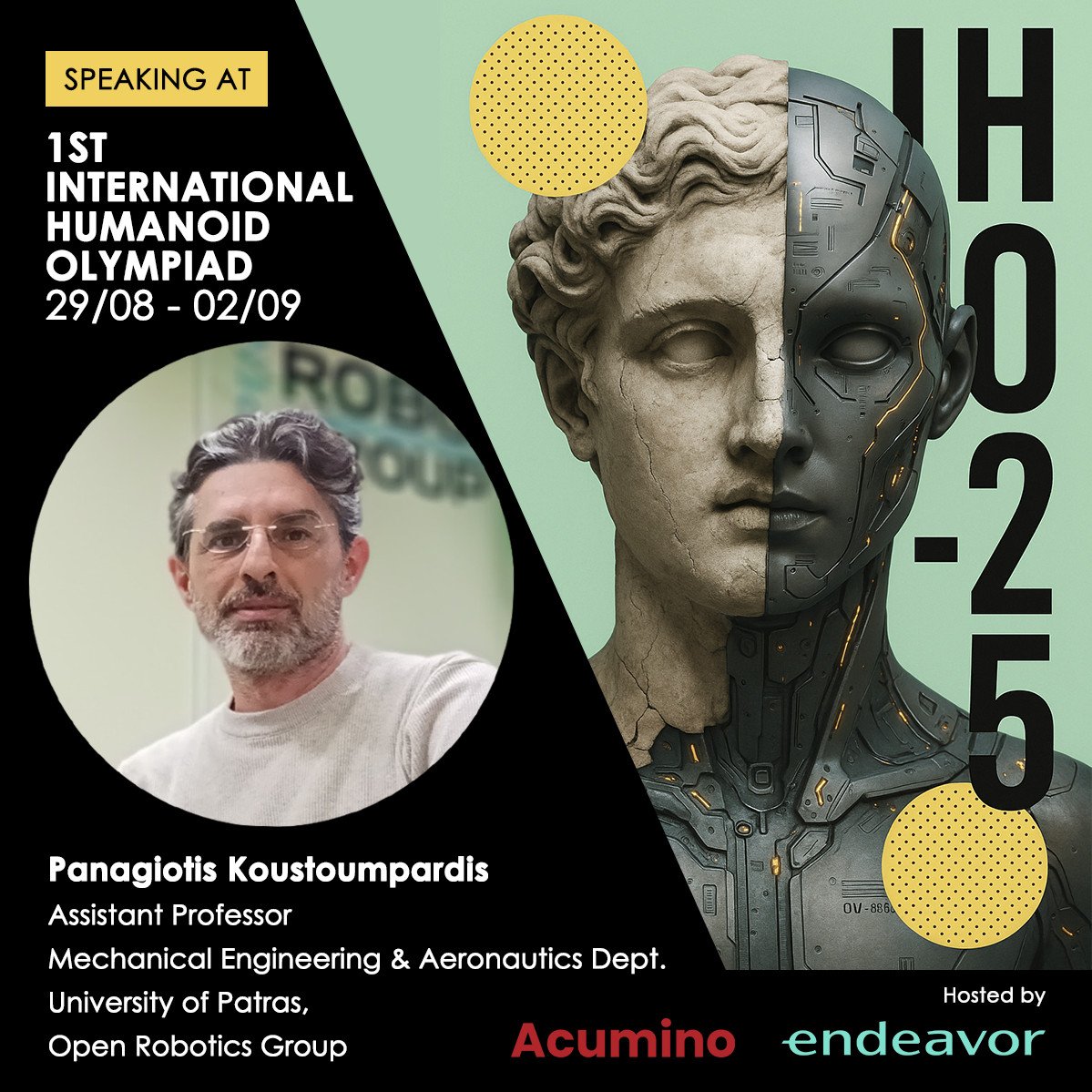 Panagiotis Koustoumpardis
Panagiotis Koustoumpardis
Title: “Soft Robots in Touch with a Soft World”
Abstract: Humanoid robots have reached a remarkable stage of maturity. Advances in mobility, locomotion, whole-body coordination, perception, and control have enabled them to navigate and operate in complex environments with increasing reliability. The next frontier, to become true partners in human environments, lies in the challenge that humanoids need hands that are not only skilful with advanced manipulations but also inherently safe. The ability to perform delicate tasks with real-world (rigid, flexible, or soft) objects is central to human activity, and with it, humanoid robots would be fully integrated into human-centric environments. Soft robotic hands offer a path forward: their compliance allows them to adapt to the flexible, soft nature of the world we live in — from fabrics to human skin — while reducing risks in close interaction. Our last decades of research on the advancement and intersection of robotic soft hands, tactile feedback, and HRI control will be presented. We emphasize that by addressing these challenges, humanoid robots can evolve from machines that look like us into partners that truly work alongside us.
 Hon Weng Chong
Hon Weng Chong
Title: “Energy & Sample Efficient Biological Neurons For Robotics”
Abstract: As the race intensifies in the Machine Learning space to apply discoveries in transformer and diffusion models to accomplish Artificial Generalised Intelligence, biology has had organisms that have been operating for millions of years in highly variable environments and controlling embodiments that constantly are in competition for resources, avoiding predation, and survival for reproduction. Central to this control system are the brains and the neurons that make up the brains of these organisms that until now has not been able to be studied independently from their natural embodiments. This talk will explore the work that the team at Cortical Labs have been doing with in-vitro neurons for control systems in video game environments and how the results can be applied to more physical embodiments in the form of robotics and drones.
Sunday, 31 August 2025
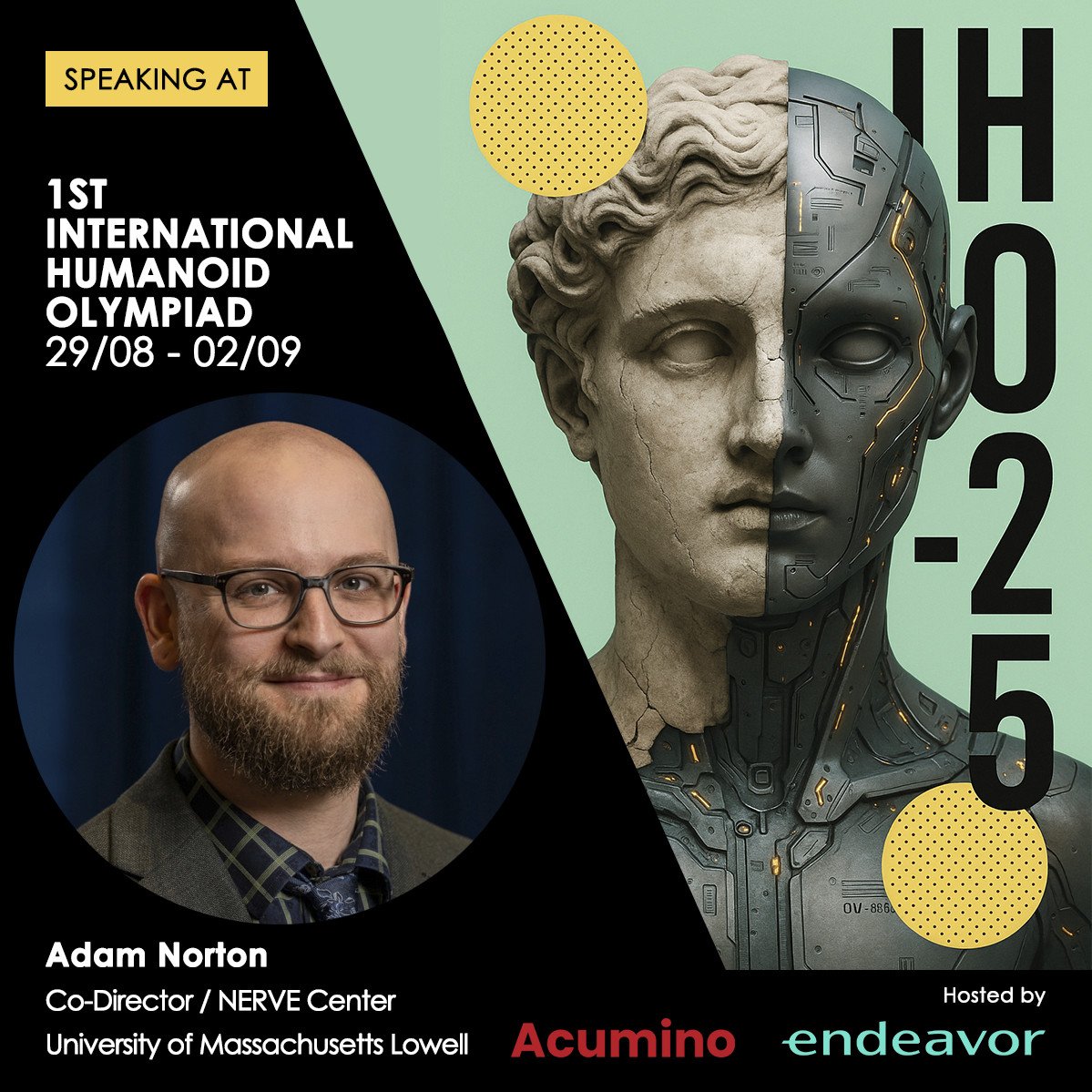
Adam Norton
Title: “Benchmarking and Reproducibility of Humanoid Performance”
Abstract: To advance humanoid robots, state-of-the-art performance must be able to be measured, compared, and replicated, requiring objective performance metrics and evaluation methods to benchmark humanoid capabilities. Many advancements have been made to develop common benchmarking tools, testbeds, protocols, and metrics for each of the functional subsystems of a humanoid robot (e.g., locomotion, manipulation, perception), but the non-deterministic nature of the algorithms that drive each of these capabilities — and the ever-evolving nature of large robot learning models — make the ability to produce repeatable performance results and true side-by-side comparison very challenging. This issue is further compounded when comparing results collected in one lab to those collected in another lab due to likely variances in hardware configurations and environmental conditions. Attempting to reproduce results from another lab in your own lab — such as to generate a baseline for comparison — presents multiple barriers due to the high complexity of a humanoid system (and the already high complexity of its subsystems). Several research thrusts in robot mobility and manipulation aim to improve the benchmarking and reproducibility of robot capabilities, including enhancing open-source and benchmarking practices, increasing modularity and interoperability of components, and developing standard test methods. This talk with review these topics and best practices towards benchmarking and reproducibility of humanoid performance.
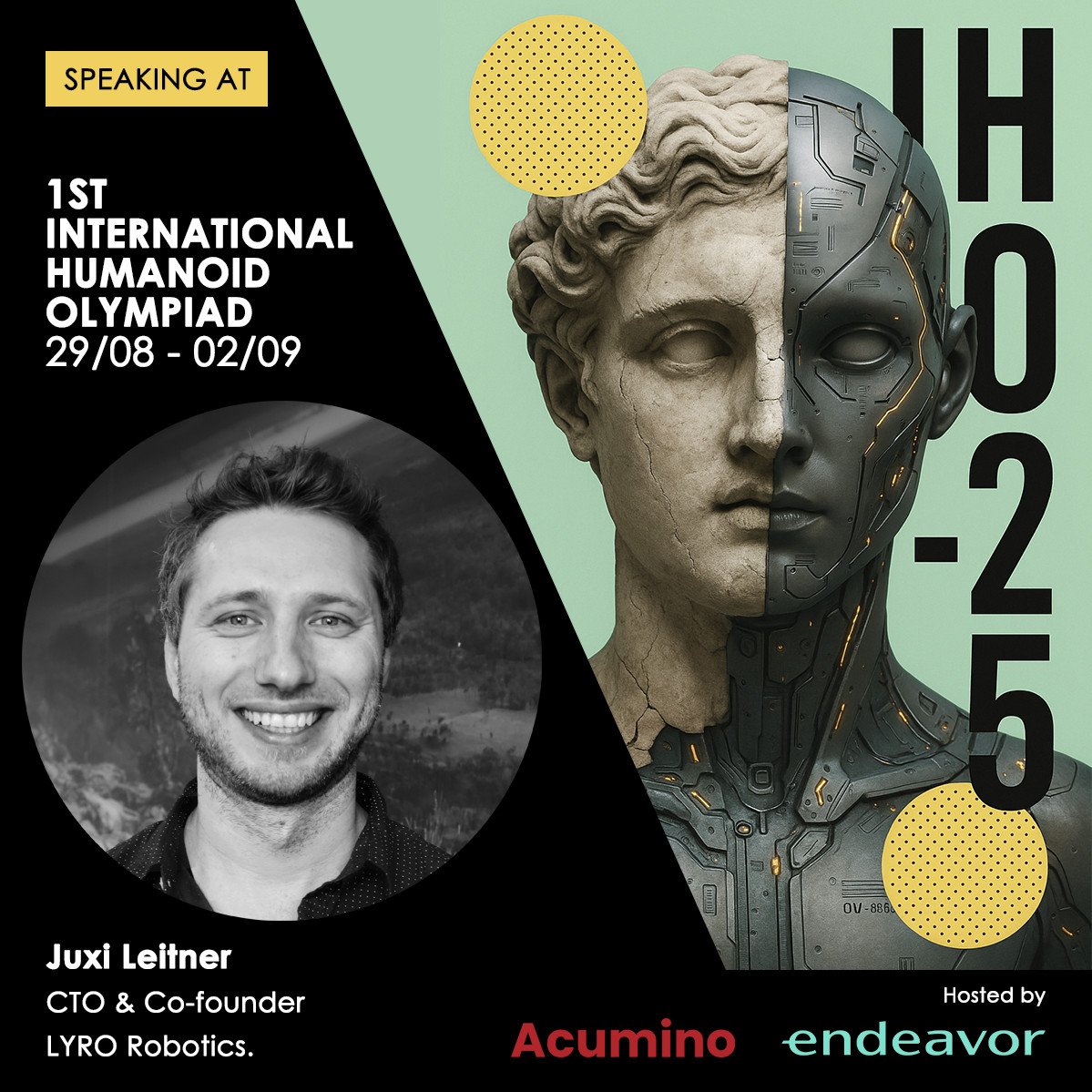 Juxi Leitner
Juxi Leitner
Title: “Dexterous Manipulation and the Challenge of Grasping the Real World”
Abstract: Dexterous manipulation remains a critical frontier in robotics, requiring systems that combine advanced perception, adaptive control, and hardware capable of handling real-world complexity. Integrating vision systems into grasp synthesis is crucial to handle the infinite possibilities of object shapes, textures, and compliance. I will talk about how tight integration of vision, ml, and reactive control can create robust object handling. Trade offs play an important part, that includes the choice of hardware, whether it is a COTS industrial setup or the latest humanoid robot. I wll highlight the challenges of transferring these systems into commercial deployments and discuss what has worked for us at LYRO.
 Luis Sentis
Luis Sentis
Title: “Are Humanoid Olympics in Space Possible?”
Abstract: You heard right—humanoid robots are going to space. With NASA and the US Space Force leading the charge, new types of humanoid robots are being developed for work, maintenance, and even play in orbit and on the moon. In this talk, we’ll look at the biggest projects making this happen. Then, we’ll explore a fun idea: what would an Olympics look like on another planet, or even in zero gravity? After all, these robotic athletes have a huge advantage: they don’t need oxygen.
 Stefanie Manzinger
Stefanie Manzinger
Title: “Simulation to Reality: Accelerating Robotics with Physical AI”
Abstract: Step into the future of intelligent robotics – where NVIDIA is empowering next-generation robots to learn, adapt, and excel with advanced skills and flexibility. Discover how innovative NVIDIA platforms like Omniverse and Isaac combine multimodal AI with high-fidelity simulation for seamless perception, action, and collaboration. Addressing the toughest data challenges, NVIDIA COSMOS delivers physics-based foundation models that generate robust synthetic data and complex environments, accelerating robotic intelligence and adaptability. See how this powerful ecosystem – from digital twins to synthetic motion – enables scalable, agile robot deployment and transforms industries. Join us to learn how physical AI is redefining the landscape of industrial automation.
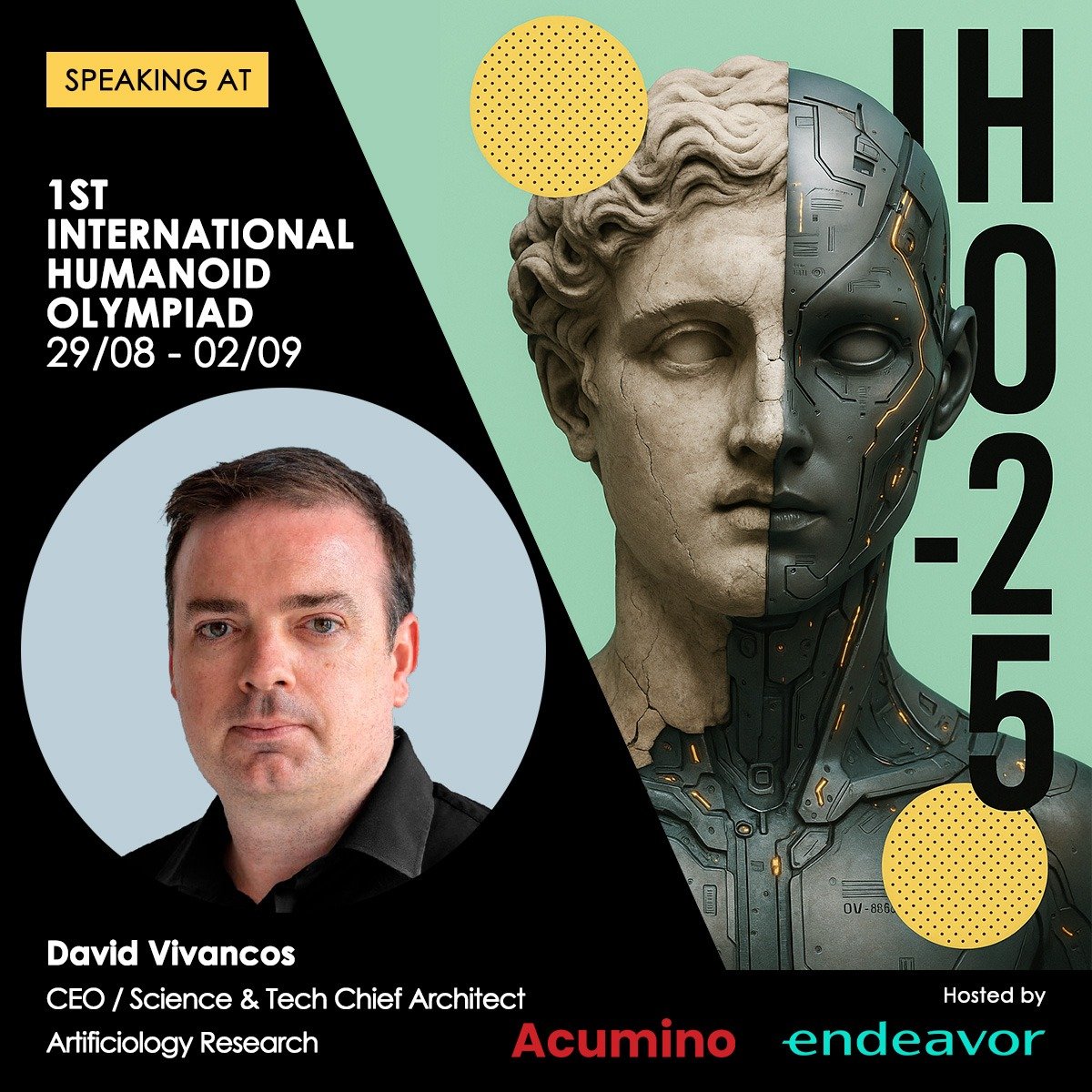 David Vivancos
David Vivancos
Title: “The Journey Towards E-AGI”
Abstract: We stand at a pivotal moment in the evolution of artificial intelligence, moving beyond disembodied digital systems, Embodied Artificial General Intelligence (E-AGI) represents the convergence of advanced cognition with physical presence in a humanoid form, machines that can think, learn, and interact with our world through sophisticated robotic bodies. This keynote explores the transformative path from narrow AI to embodied general intelligence, introducing Artificiology as the systematic study of how artificial beings evolve and develop autonomously. Through the E-AGI Barometer framework & The E-AGI Exam, we can measure our progress across eight critical dimensions and 144 metrics—from cognitive performance and motor control to consciousness and ethical reasoning. Building the First real E-AGI isn’t merely a technological feat, it’s simply humanity’s next evolutionary chapter.
Monday, 1 September 2025
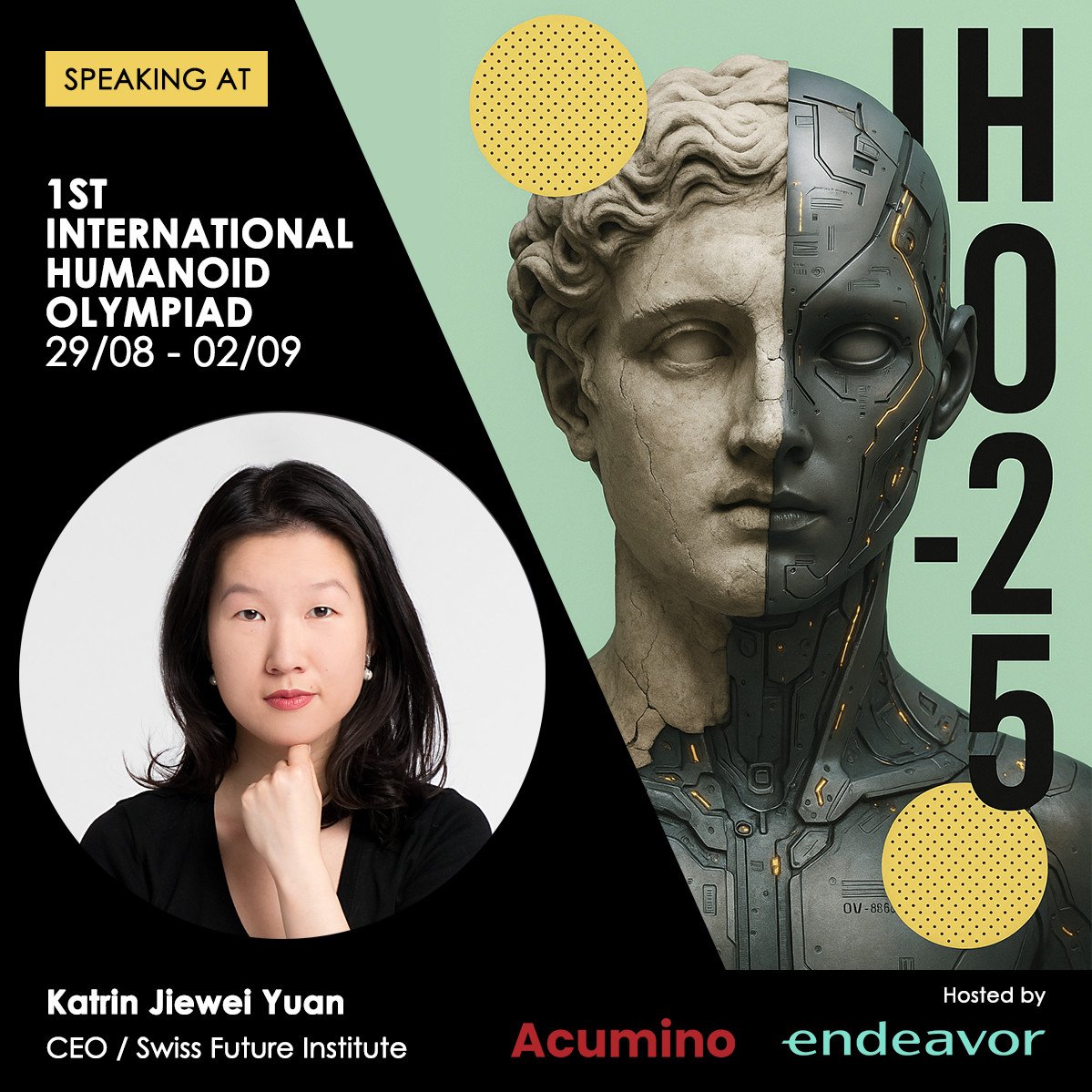
Katrin Jiewei Yuan
Title: “AI Disruption meets Visionary Future – When AI Robots upgrades Human Evolution”
Abstract: What are the future trends and AI Robotics disruption in a visionary future? It’s an exciting time! Diving into the future, what will radically change and what will stay? How will robots change our lives and the terms of evolution? How can companies capitalise on future trends, drive fundamental disrupting change and reshape models, roles, tasks and forms in an unprecedented way? Discover how you can make your organisation fit for the future and gain a decisive competitive advantage. According to Darwin, it is not the strongest who will survive, but the one who adapts best to change.
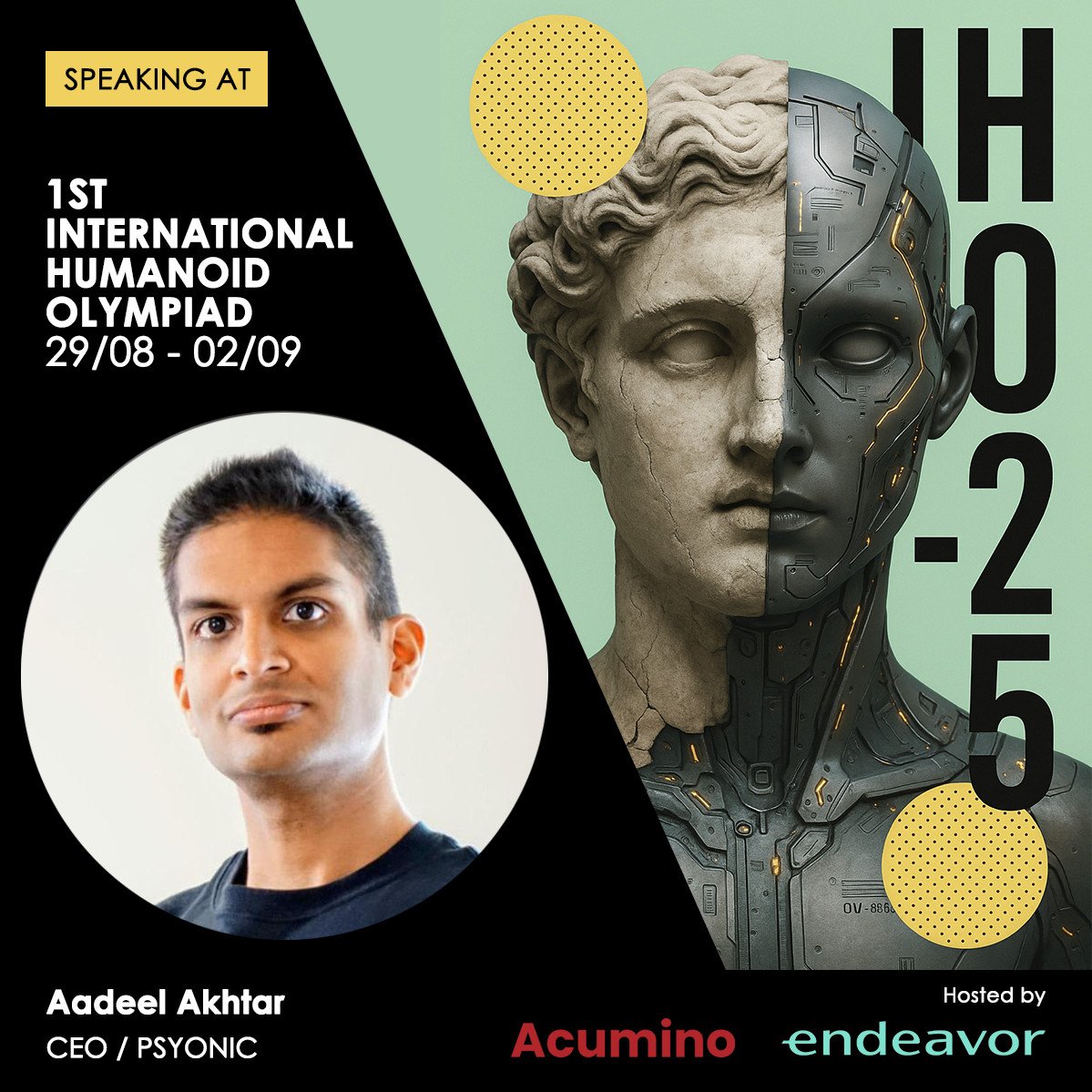 Aadeel Akhtar
Aadeel Akhtar
Title: “Advanced Bionic Hands for Humans and Robots”
Abstract: The journey of developing the PSYONIC Ability Hand has revealed valuable insights into the parallel needs of humans and robots in performing complex tasks. Our bionic hand, designed for both, provides precise control, sensory feedback, and durability. By bridging biomechatronics and robotics, our work for human users–focusing on natural movement and intuitive control–has directly influenced how robots manipulate objects in unstructured environments. This talk will explore how advancements in human prosthetics have fueled breakthroughs in robotic applications, creating a synergistic pathway toward dexterity and adaptability in robotics, ultimately setting new standards for bionic technology across both domains.
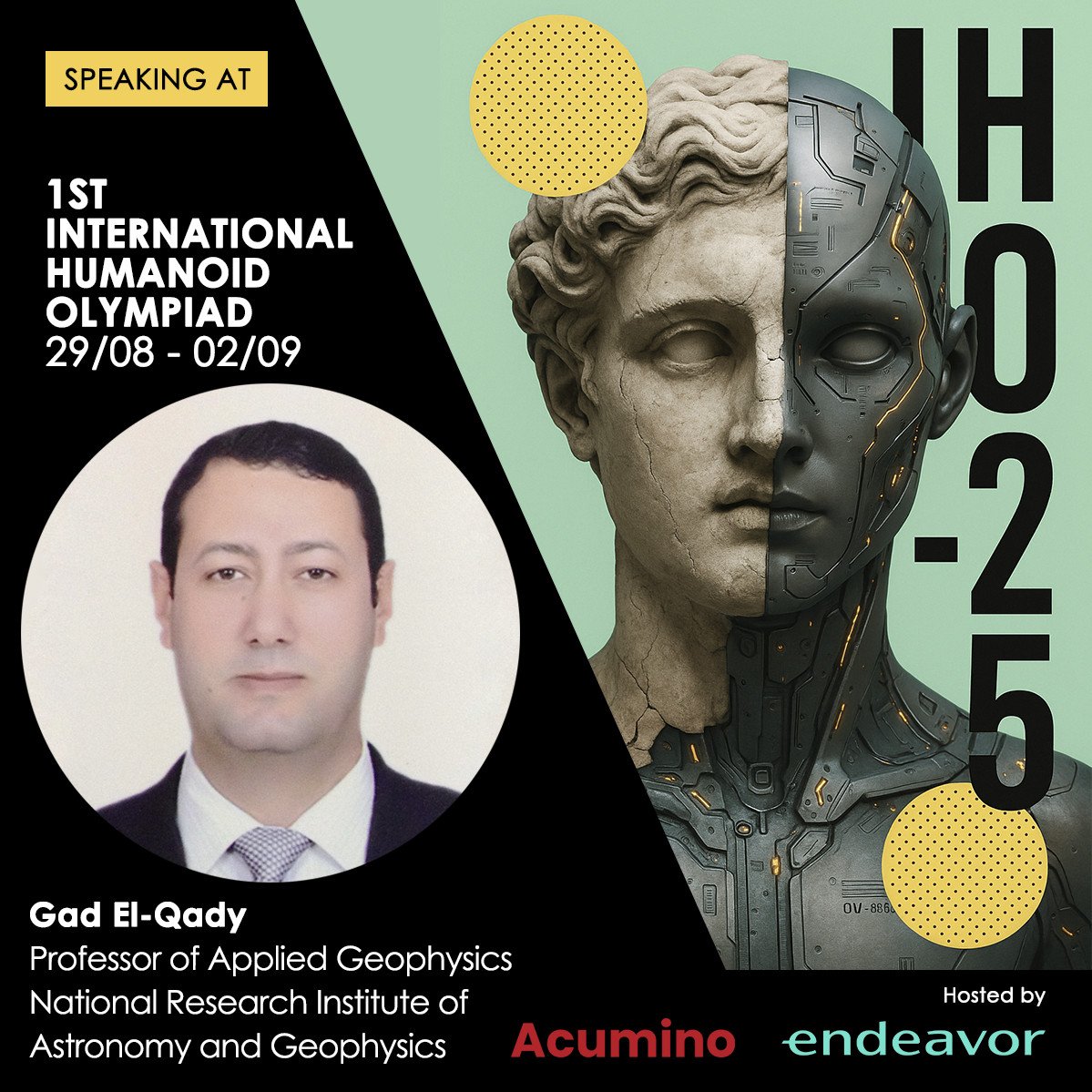 Gad El-Qady
Gad El-Qady
Title: “AI in heritage exploration, documentation and conservation”
Abstract: TBC
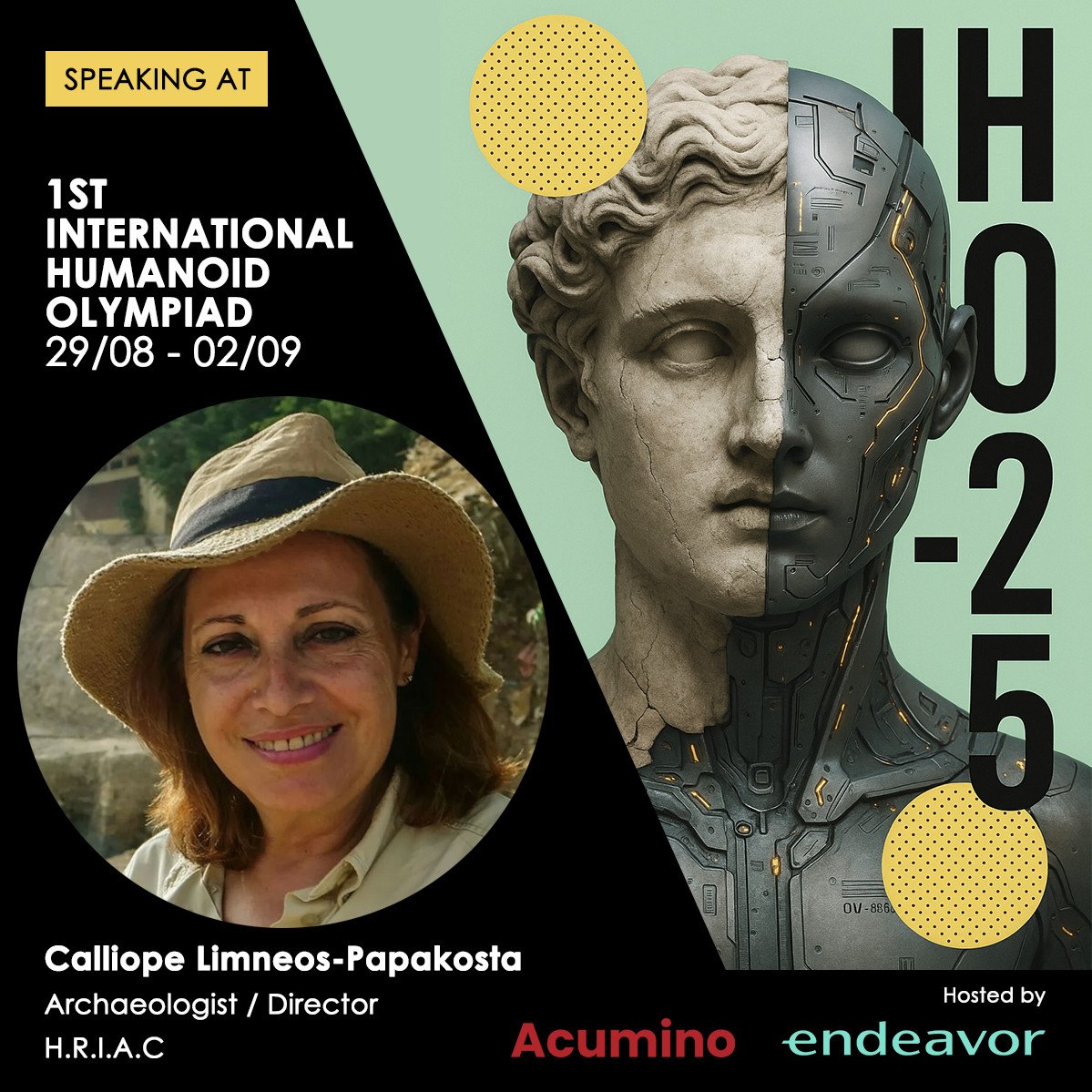
 Calliope Limneos-Papakosta & Minas Liarokapis
Calliope Limneos-Papakosta & Minas Liarokapis
Title: “Physical AI and Dexterous Humanoids in Archaeology: The Case Study of Project 323”
Abstract: Physical AI—the integration of advanced artificial intelligence with embodied robotic systems—has emerged as a transformative paradigm for deploying autonomous and semi-autonomous agents in complex, unstructured environments. Among the promising embodiments are dexterous humanoids, capable of fine manipulation, adaptive decision-making, and safe collaboration with human experts. This talk will explore the potential of Physical AI-powered humanoids in archaeology, where delicate handling, contextual reasoning, and adaptability are essential for preserving cultural heritage. We will present a case study from a recent excavation in Egypt, where dexterous humanoid systems can be deployed to assist archaeologists in carefully unearthing fragile artifacts within confined, hazard-prone spaces. The talk will highlight the required multimodal perception capabilities, precision manipulation tools, and real-time decision-making framework, demonstrating how Physical AI can augment human expertise, improve safety, and expand the scope of archaeological exploration. The discussion will conclude with insights on the broader implications of humanoid robotics for heritage preservation and the future of field archaeology.

